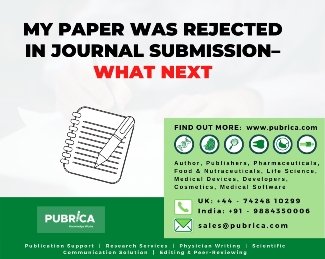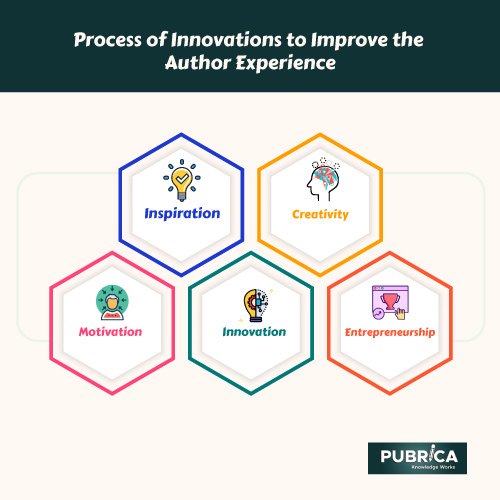
What an editor wants from your manuscript
September 22, 2021
What Does If My Paper Is Rejected in Peer Review?
October 12, 2021In brief
Innovations, new initiatives and ideas, and research and quality improvement (QI) study findings cannot reach nurses and other healthcare professionals who may apply this information in their practice unless disseminated. Reports of initiatives and research in one’s healthcare environment, presentations at conferences, disseminating findings through social media and news sources, and writing for publication are just a few examples of dissemination strategies. Some of these methods, such as social media and periodicals, reach a larger audience than others, such as giving a conference.
Introduction
A literature review is a detailed survey that gives a description, summary, and assessment of what other writers have published about a given topic (1). Literature reviews are a unique nursing study that draws on academic traditions from other fields, including anthropology, psychology, and sociology. On the other hand, nursing journal reviews provide discipline-specific insights on healthcare phenomena occasionally seen in other academic publications.
A comprehensive review of relevant literature
After deciding on a topic and locating relevant material, the following step evaluates the literature comprehensively. The authors aim to give a complete understanding of the chosen topic in addition to the review. Therefore, authors should attempt to offer a balanced overview of the issue, including presenting the topic’s strengths and limits as documented in the literature (2).
Writing a Research Report
The research project format, which explains a research project, is usually organised and follows the research process (3). The IMRAD format is used to arrange a research report (introduction, methods, results, and discussion). These manuscripts describe why the study was needed, the methodology utilised, the findings, and the implications of the findings. For example, suppose the study was a randomised controlled trial (RCT). In that case, the authors should use the Consolidated Standards of Reporting Trials (CONSORT) checklist to ensure that their reports contain all of the key information needed to evaluate the results.
Pubrica offer several value-added Research Publication Support Solutions which enable Researchers to Publish their Manuscript in International English Journals.
Writing a Quality Improvement Article
The desire to enhance the quality and safety of health care has writing a research paper resulted in an explosion of projects and research on quality improvement and an awareness that this work has to be shared. This is especially true in nursing, where many scholarly initiatives are QI due to the rise of DNP programmes. Descriptions of QI studies must be thorough, much like research papers, but they must also include extensive information about the study’s context – the local setting (4).
Author experience and importance
The road to publication support, especially for Early Career Researchers, may be complicated and time-consuming (ECRs). With the emergence of developing technologies and shifting norms, many parts of the author experience continue to evolve. They are committed to addressing academics’ needs and resolving current discomfort facts in an increasingly competitive and fast-changing publication market.
Actively working on answers to the issues that researchers face when attempting to publish their research currently, market research, one-on-one author interviews, and ECR workshops are used to develop a user-centric discovery strategy. To introduce innovative new platforms that will make it simpler for researchers to find journals for submission, prepare and submit papers, promote their research results beyond published publications, and reduce the time it takes for papers to be published.
THE PROCESS OF INNOVATION
We arrived at this method by dissecting the previous paragraph’s innovation concept and breaking it down into logical components. The following are the parts of bringing an idea to popular acceptance: Inspiration—Creativity—Motivation—Entrepreneurship—Innovation. The process generally starts with a fragmented idea that is later developed by combining it with additional fragmented ideas to produce a full creative inspiration. At this stage, the motivated entrepreneur must put the developed creative concept forward to see if it has societal acceptability, is superior to what is already available, has value, and has an immediate and long-term influence on society. However, this process is not always ordered since achieving greatness might undermine inspiration when starting the innovation process.
- Pubrica experts address all points raised by the editor and reviewers and provide a polite and scholarly response/rebuttal letter with point-by-point responses to the comments raised.

THE CHARACTERISTICS OF INNOVATIVE INDIVIDUALS
We now move to the person after a response to reviewer what innovation is, how the inventive process works, and the fundamental features of innovation. We must look at the qualities that inventive minds possess and how they may be cultivated and enhanced if we understand what innovation is and how it can be improved. Finally, we must think about how we might encourage people to utilise and enhance their creative abilities.
NEXT STEPS
We must now examine how to use this information to develop an efficient and effective educational approach (BK4) to concretely increase innovation results, having studied the innovation process, the qualities of inventive persons, and the relevance of innovative surroundings.
Believe that rather than create innovative characteristics, we should show people how to cultivate innovative thinking by 1) fully utilising the traits they already have, 2) awakening dormant traits, and 3) comprehending the importance of contextual factors or the innovation environment. Thus, we would “shift the curve to the right” in this way, allowing people to better their inventive thinking and raise the quality and quantity of the ideas they produce (5).
About Pubrica
Pubrica meets summit standards and protocols of journal publishing ethics in every single phase of services and processes. Pubrica adheres to authorship guidelines drafted by the International Council of Medical Journal Editors (ICJME), and the scope for services will be routinely updated as per the Committee of Publication Ethics (COPE) and International Society of Medical Publication Professionals guidelines (ISMPP).
References
- Aveyard, H. (2010). Doing a literature review in health and social care: A practical guide (2nd ed.). Berkshire, United Kingdom: Open University Press.
- Schnock, K.O., Biggs, B., Fladger, A., Bates, D.W., & Rozenblum, R. (2017). Evaluating the impact of radio frequency identification retained surgical instruments tracking on patient safety: A literature review. Journal of Patient Safety. [Epub ahead of print]. doi: 10.1097/PTS.0000000000000365
- Oermann, M.H., & Hays, J. (2019). Writing for publication in nursing (4th ed.). New York, NY: Springer Publishing
- Oermann, Marilyn H., Tom Christenberry, and Kathleen M. Turner. “Writing a publishable review, research, quality improvement, and evidence-based practise manuscripts.” Nursing Economics 36.6 (2018): 268.
- Poirier, Victor, et al. “Thoughts on improving innovation: What are the characteristics of innovation and how do we cultivate them?.” Technology & Innovation 18.4 (2017): 319-330.
